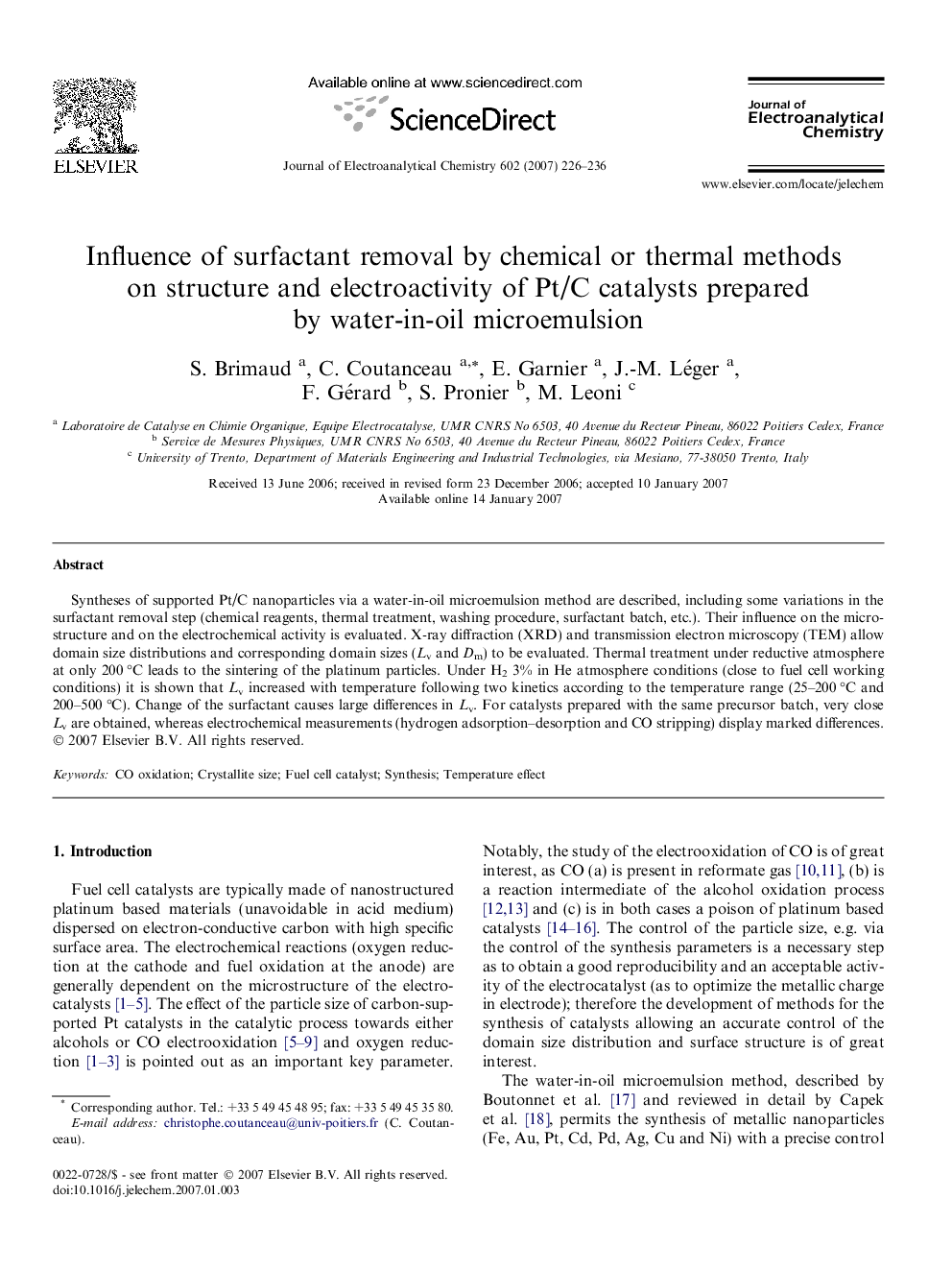| Article ID | Journal | Published Year | Pages | File Type |
|---|---|---|---|---|
| 221191 | Journal of Electroanalytical Chemistry | 2007 | 11 Pages |
Syntheses of supported Pt/C nanoparticles via a water-in-oil microemulsion method are described, including some variations in the surfactant removal step (chemical reagents, thermal treatment, washing procedure, surfactant batch, etc.). Their influence on the microstructure and on the electrochemical activity is evaluated. X-ray diffraction (XRD) and transmission electron microscopy (TEM) allow domain size distributions and corresponding domain sizes (Lv and Dm) to be evaluated. Thermal treatment under reductive atmosphere at only 200 °C leads to the sintering of the platinum particles. Under H2 3% in He atmosphere conditions (close to fuel cell working conditions) it is shown that Lv increased with temperature following two kinetics according to the temperature range (25–200 °C and 200–500 °C). Change of the surfactant causes large differences in Lv. For catalysts prepared with the same precursor batch, very close Lv are obtained, whereas electrochemical measurements (hydrogen adsorption–desorption and CO stripping) display marked differences.
